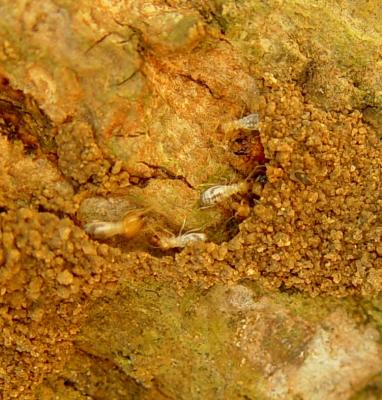
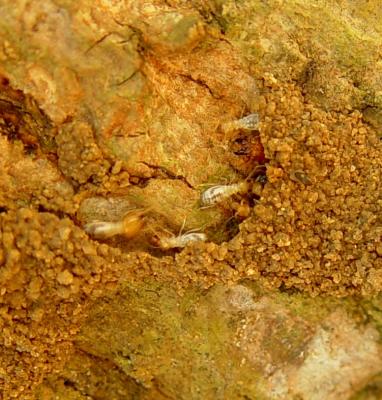
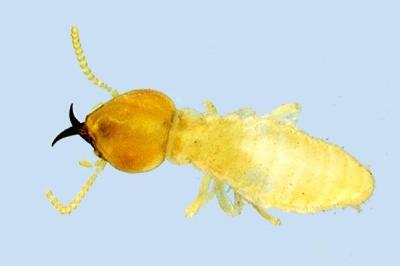
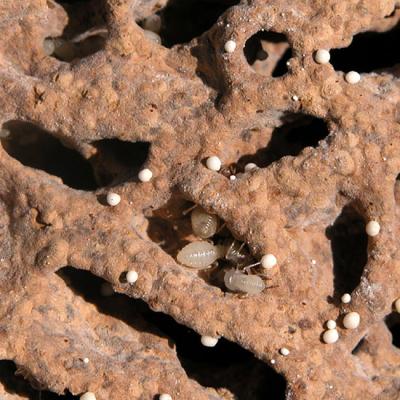
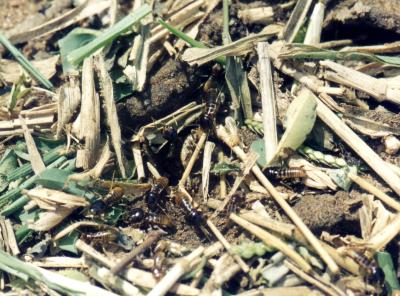
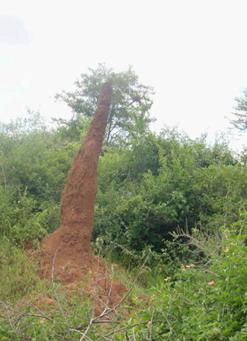
new text
Distribution of termite (Isoptera) species in southwestern Kenya in relation to land use and the morphology of their galleries Zeitschrift Biology and Fertility of Soils Verlag Springer Berlin / Heidelberg ISSN 0178-2762 (Print) 1432-0789 (Online) Heft Volume 3, Numbers 1-2 / Februar 1987 DOI 10.1007/BF00260581 Seiten 69-73 Subject Collection Biomedizin & Life Sciences SpringerLink Date Montag, 29. November 2004 Summary The distribution of termite species was studied in an agricultural area in the humid highlands of southwestern Kenya. Species composition appeared to be mainly controlled by altitude, drainage conditions and intensity of tillage. At higher altitudes fewer species occurred than at lower altitudes, and in poorly drained areas fewer species were present than in well-drained areas. Nests of 16 species were found in pasture, 9 under perennial crops and 7 under annual crops. Most sensitive to tillage were Termitinae species and two Odontotermes species, which were hardly found in cultivated fields. In contrast to other species, Microtermes spp. increased in abundance under cultivation. The subterranean galleries of each termite species have their own characteristic morphology, which leads to differences in soil structure. A description of galleries of the most abundant species is presented. Key words Termites - Isoptera - Southwestern Kenya - Subterranean galleries - Odontotermes spp. - Microtermes spp. Dedicated to the late Prof. Dr. M.S. Ghilarov
Notes for REVIEW
mh, 18.9.09 Unfortunately Citrus, Coffee, Pigeon pea, Sorghum and Sweet potato were not marked online, therefore pestmodules for these crops are missing. Further, in the text there are more hosts mentioned, pls align information with the one in the header (i.e. Host list below is: cotton, maize, wheat, sugarcane, upland rice, potatoes, sweet potatoes, groundnuts, soybean, coffee, cassava, tea, cocoa, rubber, oil palm, coconut, some vegetables, some fruit trees like; mango, papaya, citrus) (There is also a nice comment online, just for your information, you can access comments from users on infonet website on the right corner on top of the termite site): Name: Abdulraqeb Al-Okaishi Date: 11-Aug-2009:'i like this information especially that related to traditional methods of controlling termites, i am more interested in termites in forestry but this information is so useful for me.') I have introduced a guiding sentence on top of 'cultural practices', I think this would be useful and provides guidance it the listed practices are not embedded in a context on how and when to apply(maybe improve wording, so that farmer understands, the more of these practices he uses, the better): 'Following find a list of cultural practices for management and prevention of termite attack.' Kindly add information on how 'to kill' termites as mentioned under cultural practices. Include info on reference addresse for natural enemies. For neem and ash useful information would be quantitative information on applications, recipes. The last sentence is not clear to me (which plant materials, which grain?): 'Apply a layer of ash to the base of the granary, or plant materials with insecticidal or repellent properties to the grain'.
Ancistrotermes spp., Amitermes spp., Coptotermes spp., Macrotermes spp., Microtermes spp., Odontotermes spp., Pseudacanthotermes spp.
